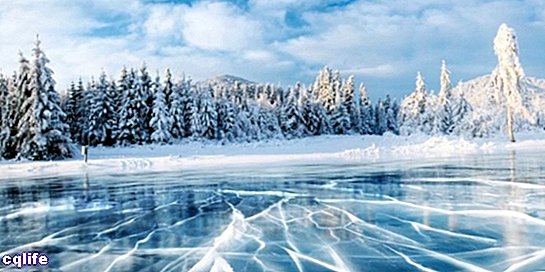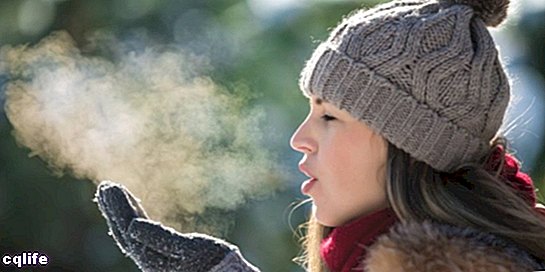- What are the states of the water?
- Water properties
- Liquid state
- Solid state
- Gaseous state
- changes of water's state
- Hydrological cycle
We explain what the states of the water are, the characteristics of each one and how the change occurs between one and the other.
Water changes state depending on pressure and temperature conditions.What are the states of the water?
We all know what he isWater and we know its three presentations, known as the physical states of water:liquid (Water),solid (ice) andgaseous (steam). These are the three ways that water can be found in the nature, without changing its chemical composition at all: H2O (hydrogen and oxygen).
The state of the water depends on the pressure around it and the temperature to which it is, that is, of the environmental conditions. Therefore, by manipulating these conditions it is possible to convert liquid water into solid or gas, or vice versa.
Given the importance of water for life and its abundant presence on the planet, its physical states are used as a reference for many systems of measurement and thus allow to establish comparisons with other materials and substances.
Water properties

Water is an odorless, colorless, tasteless substance, of pH neutral (7, neither acidic nor basic). It is made up of two atoms of hydrogen and one of oxygen in each molecule.
Its particles have an enormous cohesion force that holds them together, so that it has an important surface tension (some insects take advantage of it to “walk” on water) and it requires a lot of Energy to alter their physical states.
The water is known as the "solvent universal ”, since many more substances can be dissolved in it than in any other liquid. In addition, it is a fundamental compound for life, abundantly present in all organisms. Water covers two thirds of the total surface of our planet.
Liquid state
In a liquid state, water is fluid and flexible.The state we most associate with water is liquid, its highest state density and incomprehensibility, and also the most abundant on our planet.
In its liquid state, the particles of the water are together, although not too much. For this reason, liquid water has a flexibility and typical fluidity of liquids and loses, on the other hand, its own shape to adopt that of the container that contains it.
Therefore, liquid water requires certain energy conditions (heat , temperature) andPressure. At a temperature between 0 and 100º C, and normal atmospheric pressure conditions, water is in a liquid state. However, it is possible to overcome yourBoiling point if it is subjected to higher pressures (superheated water), being able to reach, in liquid state, the critical temperature of 374 ° C, the temperature limit at which gases can liquefy.
Liquid water is ordinarily found in seas, lakes, rivers and underground deposits, but also contained in the bodies of theliving creatures.
Solid state

The solid state of water is commonly known as ice and is reached by lowering its temperature to 0 ° C or below. A curiosity of frozen water is that it wins volume versus its liquid state. That is, ice has a lower density than water (which is why ice floats).
Ice is hard, brittle and transparent in appearance, turning white and blue, depending on its purity and the thickness of its layers. Under certain conditions, it can be temporarily held in a semi-solid state, known as snow.
Solid water can ordinarily be found in glaciers, at the top of the moutains, on frozen soils (permafrost) and on the outer planets of the Solar system, as well as inside our freezer food.
Gaseous state

The gaseous state of the water is known as steam or water vapor and is a common component of our atmosphere, present even in each exhalation we give. In conditions of low pressure or high temperature, water evaporates and tends to rise, since the vapor is less dense than the air.
The change to the gaseous state occurs at 100 ° C, as long as one is at sea level (1 atmosphere). Gaseous water makes up the clouds we see in the sky, it is found in the air we breathe (especially on our exhalations) and in the mist that appears on cold and cold days. humidity. We can also see it if we put a pot of water to boil.
changes of water's state
As we have seen in some of the previous cases, water can change from one state to another, simply by varying its temperature conditions. This can be done in one direction or another and we will give each different process its proper name:
- Evaporation. Transformation from liquid to gaseous, increasing the temperature of the water to 100 ° C. This is what happens with boiling water, hence its characteristic bubbling.
- Condensation. Reverse process: transformation from gas to liquid, due to heat loss. This is what happens to water vapor when it condenses on the bathroom mirror: the mirror surface is colder and the vapor that settles on it becomes liquid.
- Freezing. Transformation from liquid to solid, lowering the water temperature below 0 ° C. The water solidifies, producing ice, as occurs in our freezers or at the peak of the moutains.
- Melting Reverse process: transformation of solid water to liquid, adding heat to ice. This process is very everyday and we can see it when we add ice to our drinks.
- Sublimation. Process of transformation from gaseous to solid, in this case water steam, to ice or snow directly. For it to occur, very specific temperature and pressure conditions are required, which is why this phenomenon occurs at the top of the mountains, for example, or in the droughts of Antarctica, where water in a liquid state cannot exist.
- Reverse sublimation. Reverse process: transformation of a solid directly into a gas, that is, from ice to steam. We can witness it in very dry environments, like the sametundra polar or in the mountainous summit, where when the solar radiation increases, much of the ice is sublimated to gas directly, without going through a liquid stage.
Hydrological cycle
The hydrological cycle or water cycle it is the circuit of transformations that water experiences on our planet, passing through its three states, gaining and losing temperature and moving from place to place.
It is a complex circuit that involves the atmosphere, oceans, rivers and lakes and ice deposits in the mountains or at the poles. Thanks to it, the planet's temperature remains stable, dry regions are hydrated and rainy regions dry out, preserving a balance climate that allows life throughout its different seasons.
